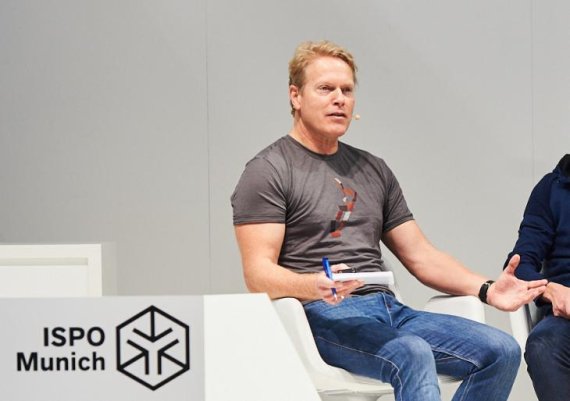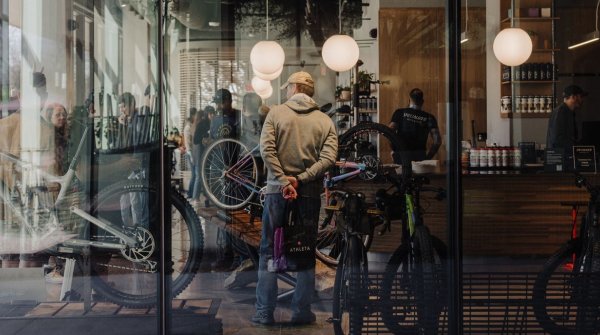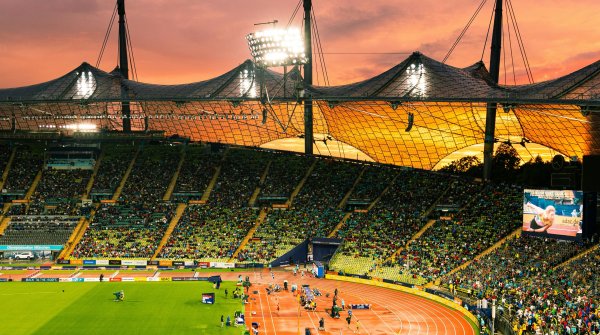
“Running has become a social trend,” says Urs Weber, who works as the editor responsible for the German edition of “Runner’s World.” The 9,512 readers and users of the specialist running magazine (and its online portal) were surveyed in late 2017.
Their answers leave room for only one conclusion: “34 percent regularly participate in running groups – this number has risen significantly in recent years,” says Weber.
The result of a broad trend towards regional running groups: The public parks in Germany’s many cities are now heavily frequented by large groups of runners, which are organized by brands like Adidas, Nike, Under Armour, retailers like Sport Scheck, and companies free of charge.
“Participation in running competitions, on the other hand, isn’t as important anymore,” says Urs Weber. 81 percent of those surveyed had participated in a competition in the past twelve months – “this number is declining slightly. My interpretation: Runners today aren’t as ambitious as they used to be.”
Other motivations are in the foreground. Health and fitness are part of the modern lifestyle – and this obviously needs to be documented with your smartphone for the social environment on Instagram, Facebook, and Snapchat. “Anyone who walks through the English Garden in Munich and pays attention to runners under the age of 25 will notice that they’re mostly women,” says Urs Weber on the ISPO Munich Health & Fitness stage.
High-quality running clothes are, for more and more runners, a matter of course. The “Runner’s World” figures verify this. “Our surveyed readers spent an average of 316 euros on running clothes in the past twelve months, and it’s a total of roughly 1,000 euros when you add shoes and accessories,” Urs Weber marvels. Retailers also appear to be benefitting from the good economic situation.
Urs Weber has one more piece of good news for the sports and running businesses: “We in Germany are experiencing tremendous specialty store loyalty. Runners consider specialty retail to be important. 84 percent buy running clothes and accessories in specialty sports stores, 82 in specialty running stores.”
And what about the competition from the Internet? Naturally, runners also shop online, but the proportion in the survey has declined slightly at 76 percent. There seems to be enough room for all running retailers; ultimately, the average surveyed runner actively uses 5.9 pairs of running shoes, buying 2.7 pairs each year.
How will things proceed in running? There’s no end to the running boom in sight, in any case. Urs Weber sees potential in the female target group. “In the US, over half of marathon participants are already women,” he reports. “In Germany, by contrast, it’s only about 25 percent. Maybe we’ll see a change there soon.”
The VIP Dinner at ISPO Munich 2018 in Pictures
 Sports BusinessThe future of the bike industry: 6 innovative bike stores
Sports BusinessThe future of the bike industry: 6 innovative bike stores
- ISPO awards
- Mountain sports
- Bike
- Design
- Retail
- Fitness
- Health
- ISPO Job Market
- ISPO Munich
- ISPO Shanghai
- Running
- Brands
- Sustainability
- Olympia
- OutDoor
- Promotion
- Sports Business
- ISPO Textrends
- Triathlon
- Water sports
- Winter sports
- eSports
- SportsTech
- OutDoor by ISPO
- Heroes
- Transformation
- Sport Fashion
- Urban Culture
- Challenges of a CEO
- Trade fairs
- Sports
- Find the Balance
- Product reviews
- Newsletter Exclusive Area
- Magazine


































